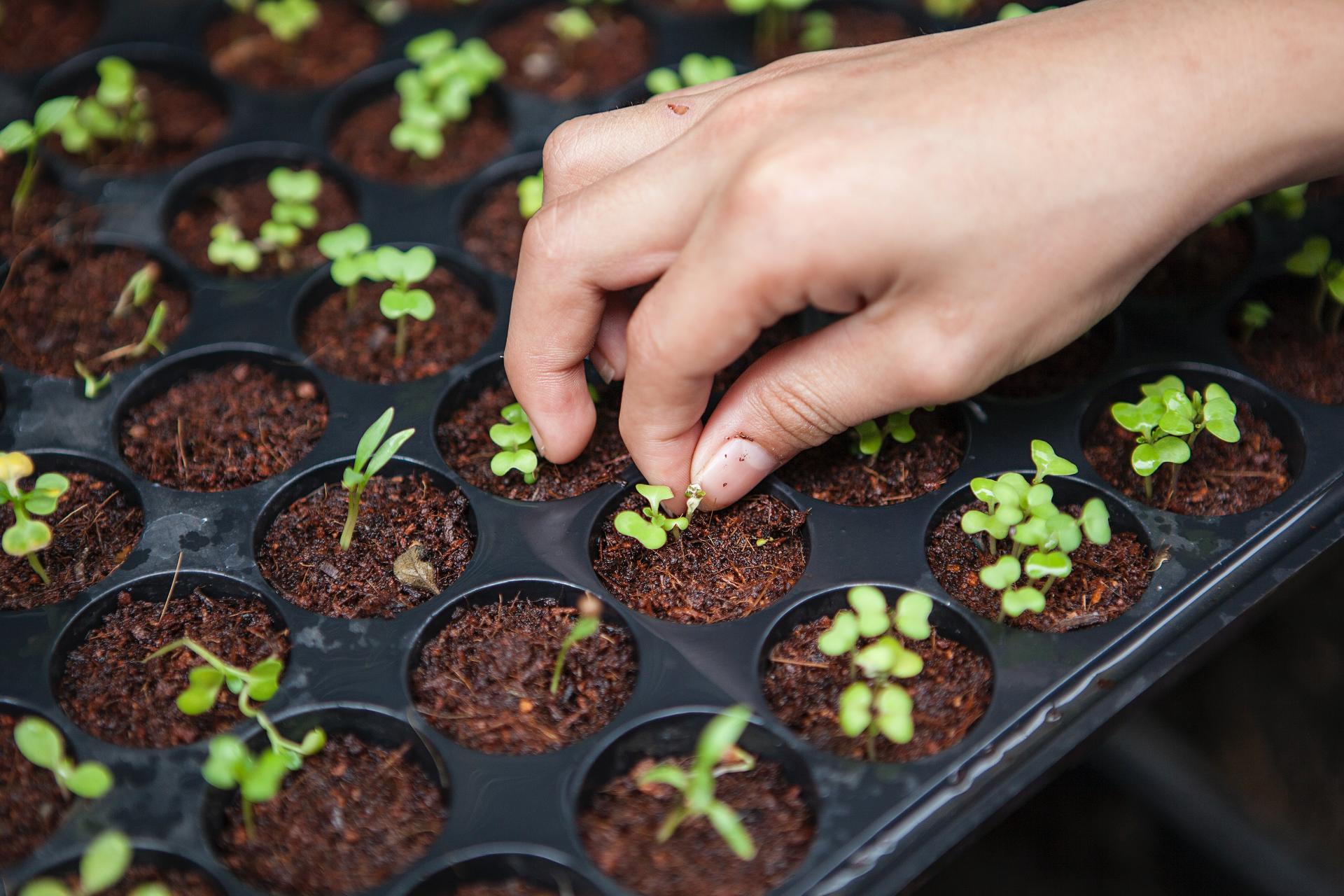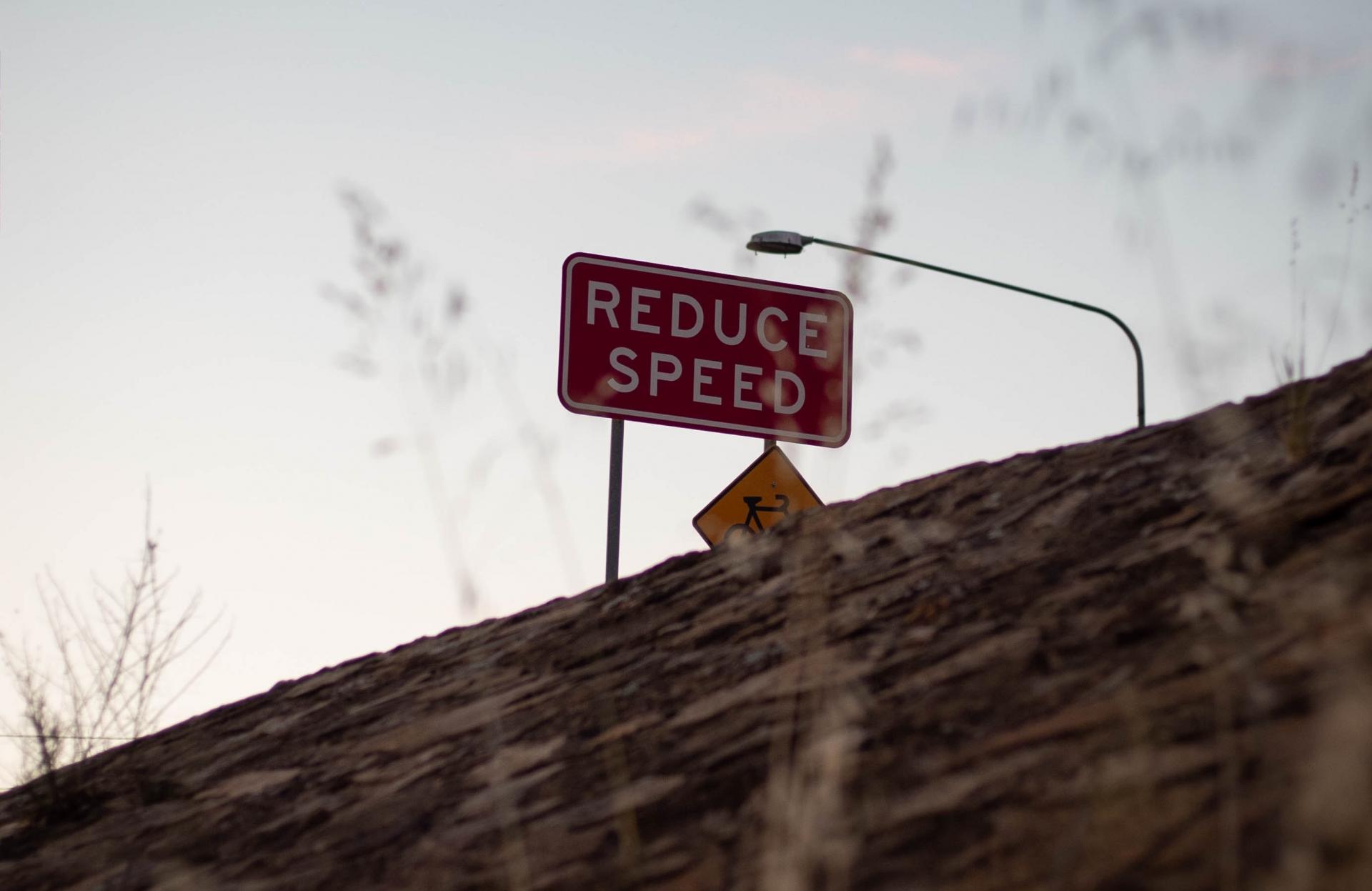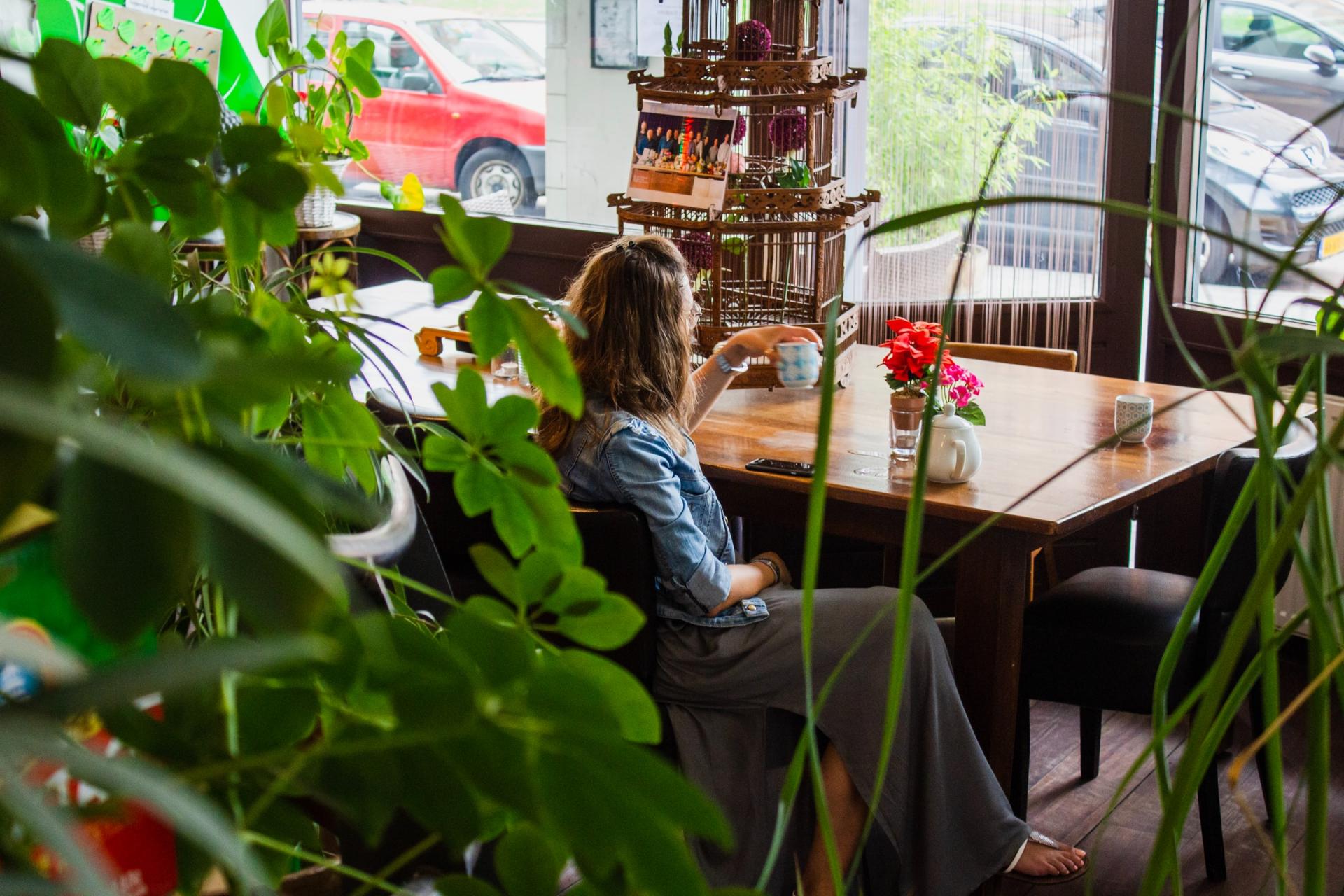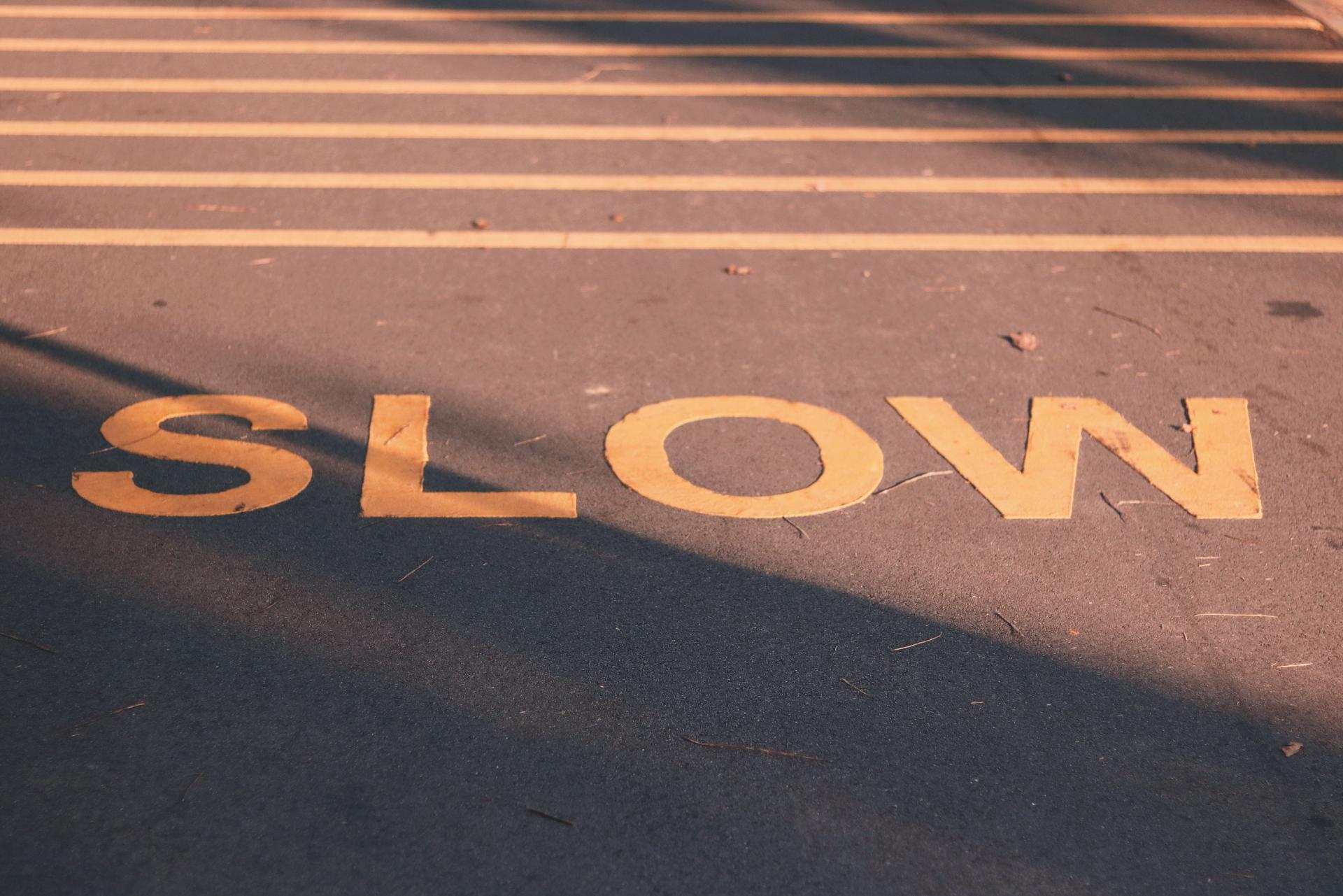By Jayal Shroff
In highly modern societies, where systems and behaviours are powered by economic growth, life moves at a fast pace. In the rush to keep up with constant and accelerated change, people often value what's "quick and easy". However, this preference for what's speedy and convenient often comes at a price to the environment.
In the following sections, I will discuss several movements and innovations that have succeeded in slowing down for sustainability.

Image via Pexels.
Voluntary Simplicity
"Downshifting" was a term introduced by in 1994 by Gerard Celente of the New York based Trends Research Institute, to describe a growing trend in consumer societies across Europe and the United States. He predicted that future generations would increasingly seek "deeper life meaning outside of materialism" and trade high-pressure, high-earning, high-tempo lifestyles for a more relaxed, less consumerist existence.
Similarly in his book, Voluntary Simplicity, author Duane Elgin states that high levels of consumption lead people to spend more time making money, which in turn deprives them of recreational opportunities. He argues that people could still enjoy the finer things in life if they refused to be part of consumerist culture. For instance, one could: prolong the feeling of contentment by choosing to buy only on special occasions; reduce stress by living simply; improve their health by eating less processed, store-bought foods; and practise mindfulness by worrying less about "things".
![]()
Image via rawpixel.com
This dialled-back way of living has always been part of traditional Japanese culture based on the philosophy of Ma and Zen minimalism. People of Japan are known to appreciate the negative spaces (or lack of things) not only in physical form, but also in aspects of speech, music or even daily routines. This is based on the notion that nothingness becomes purposeful and allows for an "uncluttered" lifestyle.
At the individual level, we can also develop some good habits to resist consumerism. These include not purchasing things just because they are "trendy"—embodying this philosophy are Uniqlo and Muji whose catalogues feature minimalist and basic designs that don't go out of style—and opting to cook our own meals instead of eating out or ordering in.
Collaborative Consumption
Systems based on collaborative consumption also seem to be more convenient and efficient. This may be why the sharing economy, one of the fastest growing business trends in history, has been embraced by urban society. Not only has collaborative consumption proven to be profitable, there are also benefits to the environment.
Basically, we are talking about traditional market behaviours of renting, lending, swapping, sharing, bartering or gifting—reinvented through technology. What shared platforms primarily do is democratise access to services and facilities.Today, we think of Fiverr and TaskRabbit when in need of freelance professional services; we call a Grab, Lyft or an Uber if we want to ride-share; we turn to WeWork and Impact Hub for co-working spaces; and we can rent anything from apartments to clothing to electrical appliances, respectively via Airbnb, Style Theory and Rent Tycoons.
![]()
Image via rawpixel.
However, the successes of Uber, Airbnb and so on are not without controversy: because these companies do not hold themselves liable to public safety, some argue that they degrade labour and commodify daily life. Therefore, as we move ahead, what's needed is an improved framework that will manage the downsides of this emergent system, while championing the merits of collaborative consumption.
Circular Economy
Before the advent of industrialisation, every farmer ran a circular economy, keeping only as much livestock as his or her land could feed, and where the animals pooped no more than the land could take. However, industrial livestock operations broke that circle by disrespecting the carrying capacity of the land.
The circular economy, based on the cradle-to-cradle concept, is all about eliminating waste and the continual use of resources. Seeking to strike balance between the availability of natural resources and consumption, circular systems employ reuse, sharing, repair, refurbishment, remanufacturing and recycling to create a closed loop. This minimises the use of resource inputs and the creation of waste, pollution and carbon emissions. For instance, when one business' waste becomes another industry's raw material, this significantly reduces pressure on the environment.

Image via Unsplash.
This approach—an alternative to the traditional linear economy of "take, make and waste"—is not against growth, however. Rather, the circular economy seeks to promote growth through actions that are in harmony with nature. From incineration plants that use technology to convert waste into energy, to old clothes being shredded and made into new materials, to converting redundant schools for office use—these are all examples of the circular economy.
Although success of the circular economy hinges on the collective efforts of large industries, institutions and governments to bring about systems change, there are things we can do to make a difference at the individual level. In our daily lives, we can compost kitchen waste, repair home appliances to extend their lifespan, and think of repurposing before discarding packaging, to name a few ways.
Other Philosophies and Practices
- Veganism/Vegetarianism: This is a practice that uses diet choice as a vehicle for sustainability. While some people adopt this practice for religious or health reasons, many more have also chosen to go vegan/vegetarian for ethical and ecological reasons.
- Transition towns: Started by Rob Hopkins, "transition" refers to a movement of communities coming together to increase self-sufficiency from potential effects of peak oil, climate destruction and economic instability.
- Permaculture: A methodology of agriculture that allows everyday people to grow plants and food in a self-sustained and ecologically harmonious manner.
- Guerrilla Gardening: This refers to using unconventional tactics and traditional gardening practices to turn small spaces of land and unused/under-utilised public spaces into oases for city-dwellers.

Image via Pexels.
The Slow Movement encompasses all the methodologies and practices mentioned above. It advocates for a shift from a fast-paced life towards one that is more measured and connected. Its roots take us back to 1986 when Carlo Petrini protested against the opening of a McDonald's restaurant in Rome.
A few years following that, the international slow food movement was founded. The concept of slow food stands for, as its name suggests, everything opposite of McDonald's: fresh, local, seasonal produce; traditional recipes; sustainable farming; artisanal production; leisurely dining with family and friends. Slow food also champions "eco-gastronomy"—the notion that eating well can, and should, go hand in hand with protecting the environment. Hence, at its heart, the movement is about fulfilment and satisfaction experienced by the guilt-free consumption of good food.

Image via Unplash.
However, the release of Carl Honoré's 2004 book, In the Praise of Slowness, was when the Slow Movement gained traction. Explaining that in modern societies, people are often enslaved by time, the author urges the reader to slow down when it makes sense to do so. For example, a doctor could spend more time in a patient consultation, or a working professional could refuse work-related calls on weekends, or one could walk instead of drive.
Common Calls to Action
Looking at these movements, one can observe a few common threads:
- They are grassroots-led initiatives.
- They encourage (and bank on) collaboration between all the stakeholders (users, community and producers/providers). Their respective designs create a win-win situation for all involved and they have the much-valued cooperation from their collaborators.
- Most of the philosophies draw from pre-existing or current practices from across the world, and have been adapted to the local and present context.
- While some of the philosophies are top-down, the future of these movements depends on grassroots actions—individually driven at first, and adopted by a broad audience through persistence.
- Use of technology has made the transfer of knowledge and scalability easy and efficient. It has resulted in higher adoption in the recent past.
- They embrace the idea of creating a new kind of economy: one that differs from today's consumerist economy. They do this by changing and improving the local economy first.
- They promise to save both time and money in the long term.
- They champion for people to live more sustainably, and to lead more meaningful and fulfilling lives.
Conclusion
In Singapore, there have been several campaigns, such as #RecycleRight or to Bring Your Own, to encourage a shift towards a Zero Waste society. These efforts have generally been received positively by citizens, and it would additionally be interesting to see how receptive the masses would be to embrace a simpler or slower way of life.

Image via Pexels.
With existing community-led concepts such as Karang guni and Tingkat, one could combine this local tacit knowledge with technology to devise innovative solutions that support more sustainable systems and ways of living. Can the rag-and-bone collectors be key players in a circular economy? Can tingkat meals be our halfway point between slow foods and McDonalds?
And underlying all that—can sustainable choices prove more fulfilling in the long term, thus becoming the norm?
I believe so.
Banner image via Wikimedia Commons (CC BY-SA 3.0).
|
|
Jayal Shroff is a design professional with a background in behavioural science. In a career spanning two decades, she has worked for several large brand-name corporations in India and around the world. With a keen interest in social impact work, Jayal has been involved in projects relating to safety, health and finance in the social space. For one such project, she received accolades for designing interventions that protect hundreds of people who trespass the railway tracks of Mumbai. With her present focus on sustainability, Jayal hopes to integrate her design knowledge with pre-existing and widespread theories as she pursues her MA course in Design at LASALLE College of Arts. She can be reached at jayalshroffsg@gmail.com |









Comments